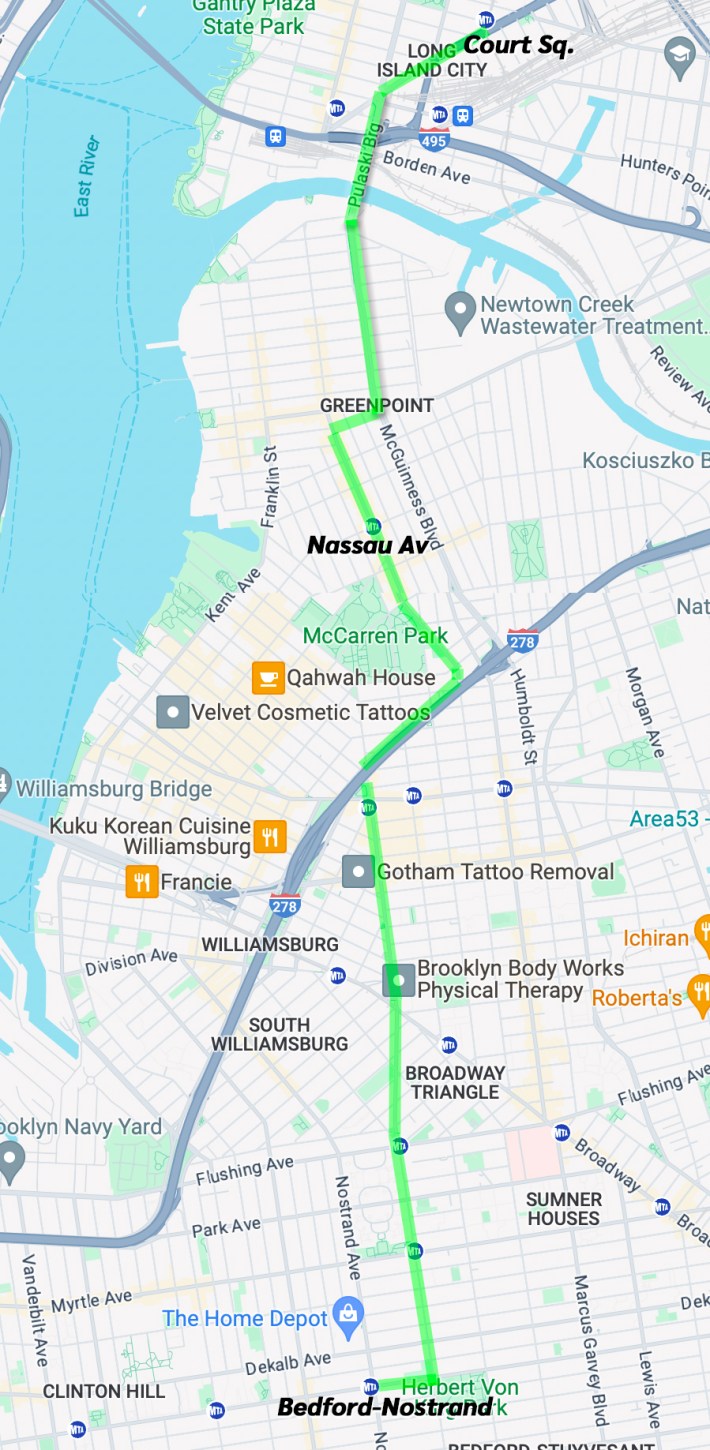G — whiz!
This summer’s G train shutdown is likely to bring commuter chaos to Greenpoint and other neighborhoods served by the city’s only Brooklyn-to-Queens subway line. Planned shuttle buses are unlikely to meet the moment. To keep riders moving, the city must install dedicated bus lanes along the route.
On any given weekday, more people ride the G train, 150,000, than the total number vehicles on the Brooklyn-Queens Expressway, 130,000. A lengthy shutdown of the BQE would be national news. Officials would spare no expense to mitigate the disruption. Look at the recent I-95 collapse in Philadelphia: Pennsylvania’s governor made repairs a top priority. What could have been a months-long project was completed in just two weeks.
But for the G train, the only rapid transit connection between New York City’s two most populous boroughs? A 10-week, around-the-clock “rolling shutdown” to kick off signal improvements with an estimated completion in 2027. According to reports in Gothamist and other outlets, the G will close in three segments — from June 28 to July 15 between Court Square and Nassau Avenue, from July 5 to Aug. 12 between Court Square and Bedford-Nostrand, and from Aug. 12 to Sept. 2 between Bedford-Nostrand and Hoyt-Schermerhorn.
In the meantime, G train riders will have to rely on limited capacity replacement bus service.

Unlike night and weekend closures on the subway, which impact fewer riders and result in less traffic on our roads, 24/7 shutdowns force tens of thousands of riders to wait for buses right when rush hour traffic is at its worst. Replacement buses will be slow and delayed. Riders who have no good alternatives will see their commute times double. Riders with means will empty their wallets for cabs that add to and must contend with traffic. Many will forgo trips altogether.
To maintain public confidence and keep transit moving, the MTA and Mayor Adams must implement dedicated bus lanes along the replacement shuttle routes.
The city Department of Transportation can simply pull from its existing toolkit for busways. Expanded curb space for bus stops along with limited access for buses, trucks, and emergency vehicles would facilitate efficient bus trips while maintaining delivery access for neighbors and local businesses.
A dedicated lane means faster trips and faster turnaround times. That allows the MTA to save money by requiring fewer buses to match subway capacity. The perennially cash-strapped MTA should seize such a simple cost saving opportunity.
Creating bus lanes to meet the demands of a subway shutdown is hardly a new idea. In 2019, the looming (and ultimately canceled) L train shutdown forced DOT to draft plans for dedicated bus lanes on 14th Street, Grand Street and along the Williamsburg Bridge. In 2022, Boston did the same with their month-long shutdown of the Orange Line. Any weeks-long line closure should get the same attention.
Dedicated bus lanes won’t only help G train riders, but also double as a pilot for DOT to achieve its existing obligation to install 30 miles of bus lanes each year. The L train and Boston Orange line temporary bus lanes proved so valuable that sections became permanent. Buses on 14th Street saw a 30 percent decrease in trip times and up to a 60 percent improvement in on-time performance thanks to the bus lanes — all while creating a far more pleasant street for cyclists, pedestrians, and delivery trucks alike.
Over 20 elected officials have already called for DOT to take advantage of modern signals to improve G train service after this construction is done. Ideas on the table include increasing frequencies, bringing back full length G trains, and even sending the G to Forest Hills for the first time since 2010.
These are valuable improvements. Queens-Brooklyn travel demand is growing faster than travel to Manhattan — but riders also need to be better served during this summer’s disruption. Dedicated busways are a straightforward solution to mitigate the upcoming travel headaches for anyone who takes the G.
As we bring the subway into the modern day, shutdowns will happen to more lines. We need a playbook to allow for the subway to modernize while still serving riders day-to-day. If the MTA [1] hopes to keep trust with riders by providing them effective service even in the event of shutdown, implementing quick dedicated bus lanes ought to become standard operating procedure.






